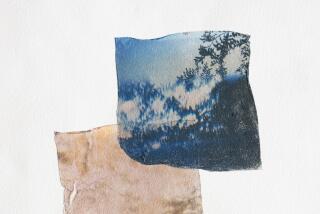Are Sands of Time Running Out on the Pyramids?
- Share via
Driving west from Cairo we began to feel uneasy. Surely there must be some mistake.
The congested, blaring, ugly thoroughfare couldn’t be our familiar route to the Pyramids, which, since 1954, we had taken dozens of times.
That quiet two-lane road, bordered by luscious fields and graceful eucalyptus, was nowhere to be seen.
“Abdullah,” I said to our driver, “we wanted the regular road to Giza. Could you find the old route from here?”
“Madam,” he replied, with all the resignation of the East, “This is the old route. It has changed much since you were last here in ’79.”
I could hardly believe him. The dust-choked slums of Cairo, now the largest city in Africa with more than 15 million inhabitants, had spread inexorably into the shadow of the Sphinx and its towering companions, the Pyramids of Cheops, Chephren and Menkure.
As we neared the last survivor of the Seven Wonders of the World, we saw jammed apartment buildings crowding to the edge of the Sahara. Lines of thirsty Egyptians pushed to fill water cans at street-side pumps. Even the air was suffocating with red dust. This could not be Giza.
Alas, it was.
Even the light had changed, what with the heavy pressure of smog, and the beautiful golden color of the Pyramids had slipped into a dead gray. The Sphinx wore a humiliating collar of scaffolding, where frantic attempts are being made to repair broken segments.
Even the dear old Mena House, the only hotel in the Pyramids area, has expanded into what was once its palm-shaded garden. Gone are the fine stables where my husband used to choose a horse for an evening ride past the monuments.
A Couple of ‘Pyramidiots’
I remembered how the ancient rocks had glowed when my husband, my son and I climbed the Great Pyramid of Cheops in 1965. We had long been “pyramidiots,” entranced by their mystery and wonder, but halfway up Cheops a terrifying vertigo seized me with a sickening conviction that I was about to hurtle through space to the ground.
Our guide, Ishmael, held my shaking hand and exclaimed, “I know you are all right, your face . . . it is brown!” I didn’t tell him that the “brown” was makeup covering what must have been a gruesome green.
Somehow I found courage to stretch for the next foothold. At last we felt a triumphant sensation of standing on the roof of the world when we finally reached the peak. It is a flat area of 20 square feet with a 10-foot metal pole indicating the original height of the Pyramid, worn down by sandstorms and 5,000 years of acquisitive climbers who had callously knocked off fragments for souvenirs.
Later we crawled through stifling interior passages to the final cavern where the black basalt sarcophagus of the Pharaoh still rests, no excursion for claustrophobics or the faint of heart.
Through the Stygian darkness of the main entrance you can glimpse, even in daylight, the North Star, and from upper chambers, the Pleiades. Coincidence? Perhaps.
Sudden Sunrise
I thought of the time 10 years later when we climbed with our daughter to the tip of Menkure, arriving at 4 a.m. to avoid the constabulary. (Authorities seem more serious now about pyramid climbing, but long-time guides who know every toehold can be persuaded to escort you up at the crack of dawn.)
I recalled the sudden sunrise over the green fields of Giza. I recalled the gravel I had to pick from my scraped and scratched behind as I slid down Menkure.
My husband has made four films in Egypt, and we’ve made many friends. I could say sincerely, as I often did to the fellahin, “I am a friend of Egypt.”
The marvels of the great monuments, so much larger and more impressive than I had ever imagined, were not the only attraction. Egyptians were willing to talk about their Islamic religion, about why they felt it appropriate to buy their wives (our driver had paid 3,000 for his No. 1 wife), and even invited us into their homes.
Proud women told us how their lives had changed since they were allowed education and the opportunity to work in the sciences and business. Our feelings about the country and its people are very positive.
Recently I met a friend active in the Mubarak government. “I can’t help telling you,” I said with some trepidation, “I’m distressed about Giza. How could this have happened?”
‘It’s Tragic’
“If you are distressed,” he answered, “think how we must feel. There was little we could do. In the last 10 years we’ve had a tremendous influx of people from the villages, coming into Cairo to work in new industries.
“We had to find space for them, and we have only 10 miles of living area between the Nile and the desert. It’s tragic, but . . . perhaps some day. . . .”
Of course I’d never tell a traveler not to go to Egypt. I’d say go now, to see the greatest fragment of human history before more of the 20th Century has damaged its wonder.
The boat trip down the Nile, with the great temples of Dendera, Idfu and my own favorite, half-Greek Komombo (with flights from Aswan to Abu Simbel), is unforgettable.
Our old haunts in Luxor and the Valley of the Kings, to our relief, were unchanged, even more romantic with magical, purple twilight, and the same open, friendly faces of village people everywhere.
Fine new hotels have been constructed during the last 10 years. Accommodations at the Luxor-Sheraton were luxurious. A soothing sail on a felucca to Banana Island made a pleasant interlude between scenes of my husband’s film.
‘Lone and Level Sands’
I was particularly pleased to be able to photograph the ruins called the “Ramesseum” in the vicinity of the Valley of the Kings near Gorna (known as “The Village of the Tomb Robbers”).
Tourists often miss that huge temple of the arrogant Pharaoh Ramses. The fallen statue that Shelley called “Ozymandias” still lies in gigantic hulks, and the “lone and level sands” still “stretch far away.”
We left Egypt gratified and reinforced by another glimpse of the Colossi of Memnon and the palace of Queen Hatshepsut. But Giza? Oh well, perhaps one day. . . .”
More to Read
Sign up for The Wild
We’ll help you find the best places to hike, bike and run, as well as the perfect silent spots for meditation and yoga.
You may occasionally receive promotional content from the Los Angeles Times.






